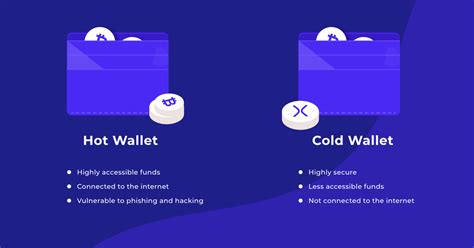Securing Your Cryptocurrency: A Guide to Hot and Cold Wallets
The world of cryptocurrency has exploded in popularity in recent years, with many individuals and institutions looking to diversify their portfolios and participate in the lucrative market. However, as the number of new cryptocurrencies and wallets increases, so does the risk of theft, hacking, and other security threats. A crucial aspect of protecting your cryptocurrency is choosing between a hot wallet (also known as a “hot” or “online” wallet) and a cold wallet (also known as a “cold” or “offline” wallet). In this article, we’ll explore the differences between these two types of wallets and provide guidance on how to choose the right one for your needs.
What is a hot wallet?
A hot wallet is a digital wallet that stores your cryptocurrency online. This type of wallet allows you to access and manage your crypto assets over an internet connection, using a secure browser or a mobile app. Hot wallets are ideal for those who:
- Want to monitor their portfolio in real time
- Need to make purchases or transfer funds on the go
- Are comfortable with having their sensitive information accessible online
- Don’t have access to traditional banking services
Hot wallets typically use strong encryption and secure protocols, such as 2-factor authentication (2FA) and password protection. However, this also means your wallet is vulnerable to:
- Phishing attacks: Scammers may try to trick you into revealing sensitive information by sending fake emails or texts.
- Cyber attacks: Hackers could potentially gain access to your account if it is compromised.
What is a cold wallet?
A cold wallet, on the other hand, stores your cryptocurrency offline, using a hardware wallet (like Ledger or Trezor) or a software wallet (like Electrum). This type of wallet requires physical storage and management, making it less accessible to hackers. Cold wallets are ideal for those who:
- Are concerned about online security
- Want to keep their sensitive information private
- Need to use their cryptocurrency in specific situations where an internet connection is not available (for example, while traveling)
- Prefer a more secure, offline approach
Cold wallets often require manual setup, including creating a seed phrase or pairing with your device. However, this also means that you will need to:
- Store your wallet in a separate location
- Manage physical storage securely
- Keep track of multiple seed phrases or recovery keys
Which wallet is right for you?
The choice between a hot wallet and a cold wallet ultimately comes down to your personal preferences and needs.
If you are new to cryptocurrency, it may be best to start with a hot wallet. Online wallets are convenient and easily accessible, making them perfect for:
- Beginners who want to learn the basics of cryptocurrency
- Those who need to monitor their wallet frequently
However, if you prioritize online security or have sensitive information at risk (e.g. identity theft), consider moving your assets to a cold wallet.
Additional tips to protect your cryptocurrency
Whether you choose a hot or cold wallet:
- Keep your seed phrase(s) safe

: Write down each seed phrase and store it in a secure location, such as a fireproof safe.
- Use strong passwords: Change your password regularly to prevent unauthorized access.
- Enable 2-Factor Authentication (2FA): Add an extra layer of security by requiring a second form of verification when you log in to your wallet or account.
- Keep your operating system and software up to date: Make sure your device’s operating system, browser, and other software are up to date to prevent known vulnerabilities.
- Regularly monitor your account activity: Regularly review your hot and cold wallets for suspicious transactions or login attempts.


